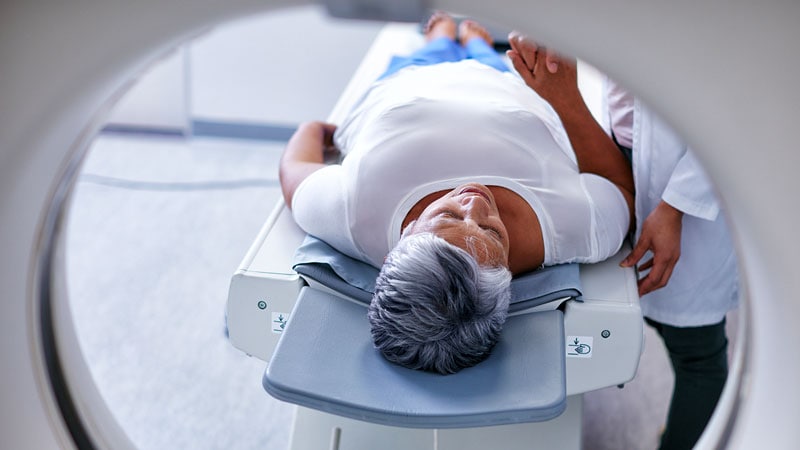insight - Radiology - # Utility of FDG-PET/CT in Guiding Salvage Neck Dissection Decisions for Head and Neck Cancer Patients
FDG-PET/CT Imaging Improves Accuracy in Identifying Residual Neck Disease and Reduces Unnecessary Surgeries for Head and Neck Cancer Patients
Core Concepts
Utilizing FDG-PET/CT imaging to assess response to chemoradiation significantly increases the accuracy in identifying which head and neck cancer patients would benefit from salvage neck dissection, thereby reducing the number of patients undergoing unnecessary surgery.
Abstract
The study examined the impact of increasing use of FDG-PET/CT imaging on the accuracy of patient selection for salvage neck dissection in 908 patients with node-positive head and neck squamous cell carcinoma.
Key findings:
90% of patients received MRI or CT, 39% received ultrasound with fine needle aspiration, and 38% received FDG-PET/CT as part of post-treatment response evaluation.
Only 41% of the 130 patients who underwent salvage neck dissection had pathologic-confirmed residual disease.
FDG-PET/CT had significantly better positive predictive value (89%) for detecting pathologic-confirmed residual disease compared to MRI/CT plus ultrasound (65%).
FDG-PET/CT improved the accuracy of residual disease detection, reducing the number of patients undergoing unnecessary salvage neck dissection by 22%.
Patients with complete metabolic response on FDG-PET/CT did not undergo salvage neck dissection and had favorable oncologic outcomes.
The negative predictive value of FDG-PET/CT was 97.5%, with only 2.5% of patients with complete metabolic response developing regional failure later.
The authors concluded that the growing evidence on the excellent performance of FDG-PET/CT in response evaluation justifies its pivotal role in selecting patients for salvage neck dissection. Patients with complete metabolic response can safely avoid unnecessary surgery, while those without complete response should undergo salvage neck dissection.
FDG-PET/CT Reduces Unnecessary Surgery in Head, Neck Cancer
Stats
130 of 908 (14%) patients underwent salvage neck dissection due to suspicion or confirmed residual neck disease.
Only 53 of the 130 (41%) patients had pathologic-confirmed residual disease based on the salvage neck dissection specimens.
FDG-PET/CT had a positive predictive value of 89% for detecting pathologic-confirmed residual disease.
MRI/CT plus ultrasound had a positive predictive value of 65% for detecting pathologic-confirmed residual disease.
FDG-PET/CT reduced the number of patients undergoing unnecessary salvage neck dissection by 22%.
The negative predictive value of FDG-PET/CT was 97.5%, with only 7 of 283 (2.5%) patients with complete metabolic response developing regional failure later.
Quotes
"The growing body of evidence on the excellent performance of FDG-PET/CT in response evaluation justifies its pivotal role in the selection of patients for salvage [salvage neck dissection]."
"In patients with complete metabolic response, salvage neck dissection 'can safely be omitted,' while in patients with no complete metabolic response, salvage neck dissection is 'strongly advocated.'"
Key Insights Distilled From
by Megan Brooks at www.medscape.com 07-17-2024
https://www.medscape.com/viewarticle/fdg-pet-ct-reduces-unnecessary-surgery-head-neck-cancer-2024a1000d3j
Deeper Inquiries
What are the potential cost-effectiveness and resource utilization implications of incorporating FDG-PET/CT into the standard of care for head and neck cancer patients?
Incorporating FDG-PET/CT into the standard of care for head and neck cancer patients can have significant cost-effectiveness and resource utilization implications. By accurately identifying which patients would benefit from salvage neck dissection, FDG-PET/CT can help reduce the number of unnecessary surgeries, leading to cost savings associated with surgical procedures, hospital stays, and post-operative care. Additionally, by avoiding unnecessary surgeries, healthcare resources can be allocated more efficiently to patients who truly require intervention, thereby optimizing resource utilization in the healthcare system.
How do the findings of this study compare to the performance of other advanced imaging modalities, such as diffusion-weighted MRI, in guiding salvage neck dissection decisions?
The findings of this study demonstrate that FDG-PET/CT has a significantly better positive predictive value for detecting pathologic-confirmed residual disease compared to other imaging modalities like MRI, CT, or ultrasound with fine needle aspiration. Specifically, FDG-PET/CT showed an 89% positive predictive value, outperforming MRI/CT plus ultrasound, which had a 65% positive predictive value. This indicates that FDG-PET/CT is more accurate in identifying patients who would benefit from salvage neck dissection, making it a superior imaging modality for guiding treatment decisions in head and neck cancer patients compared to diffusion-weighted MRI or other advanced imaging techniques.
Given the retrospective nature of this study, how can the results be validated in a prospective, multi-institutional setting to further establish the role of FDG-PET/CT in this clinical context?
To validate the results of this study in a prospective, multi-institutional setting, a large-scale clinical trial can be conducted involving multiple healthcare institutions. This trial should include a diverse patient population with node-positive head and neck squamous cell carcinoma from various subsites and unknown primary sites to ensure the generalizability of the findings. Standardized protocols for FDG-PET/CT imaging interpretation and salvage neck dissection should be established across all participating institutions to maintain consistency in the evaluation process. By prospectively collecting data on patient outcomes, including oncologic outcomes and the accuracy of FDG-PET/CT in guiding salvage neck dissection decisions, the role of FDG-PET/CT in this clinical context can be further established and validated.
0
